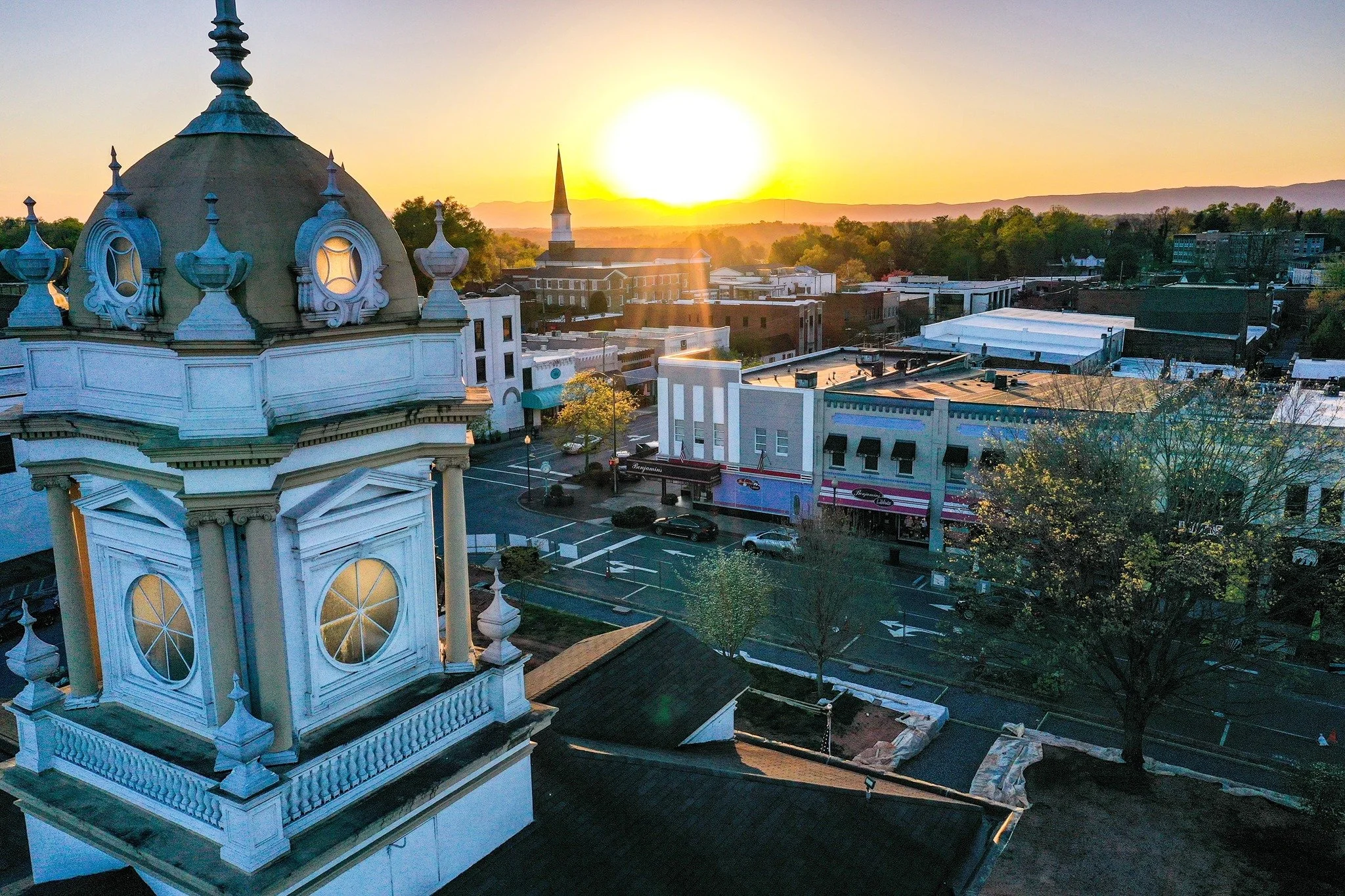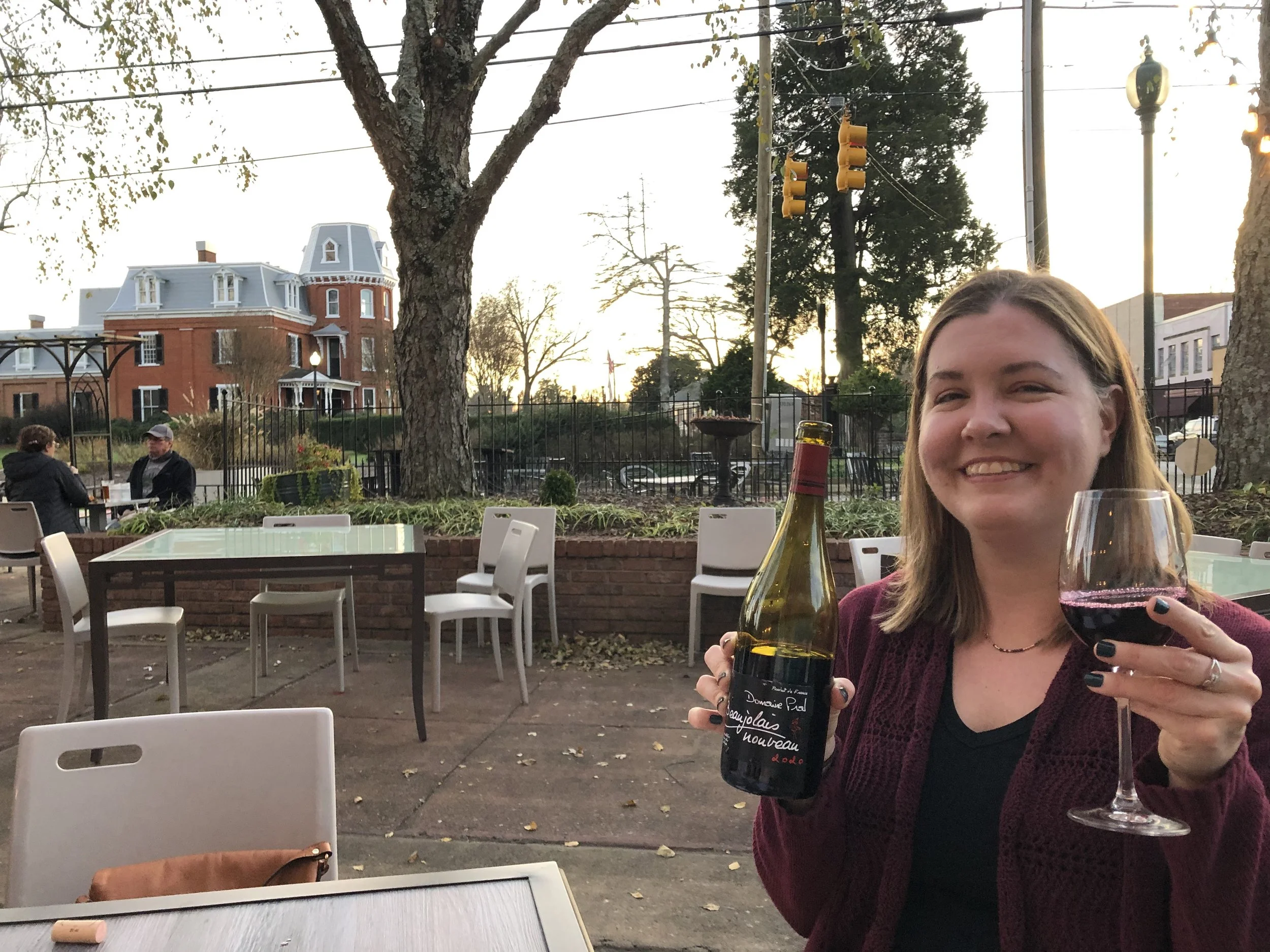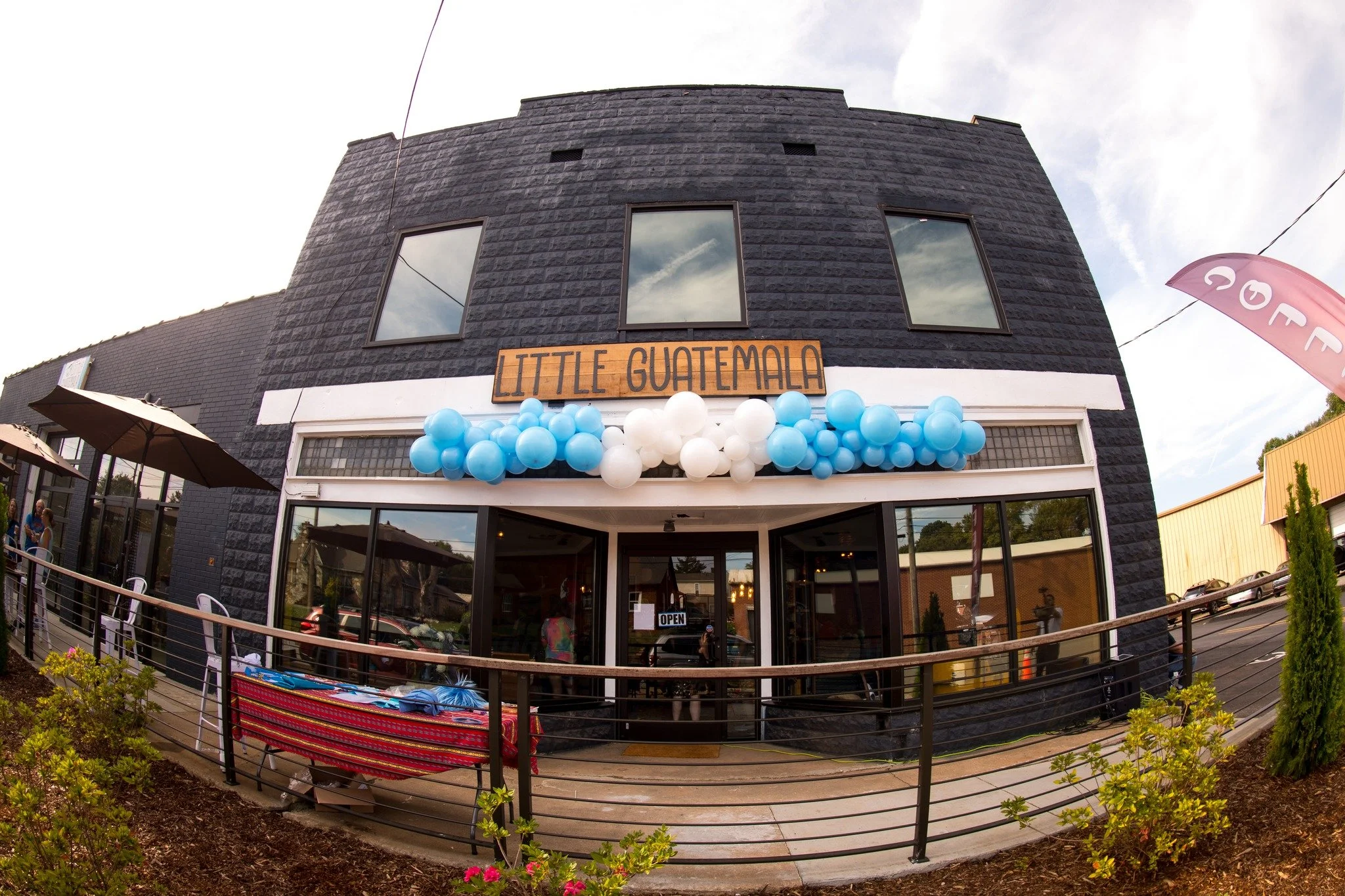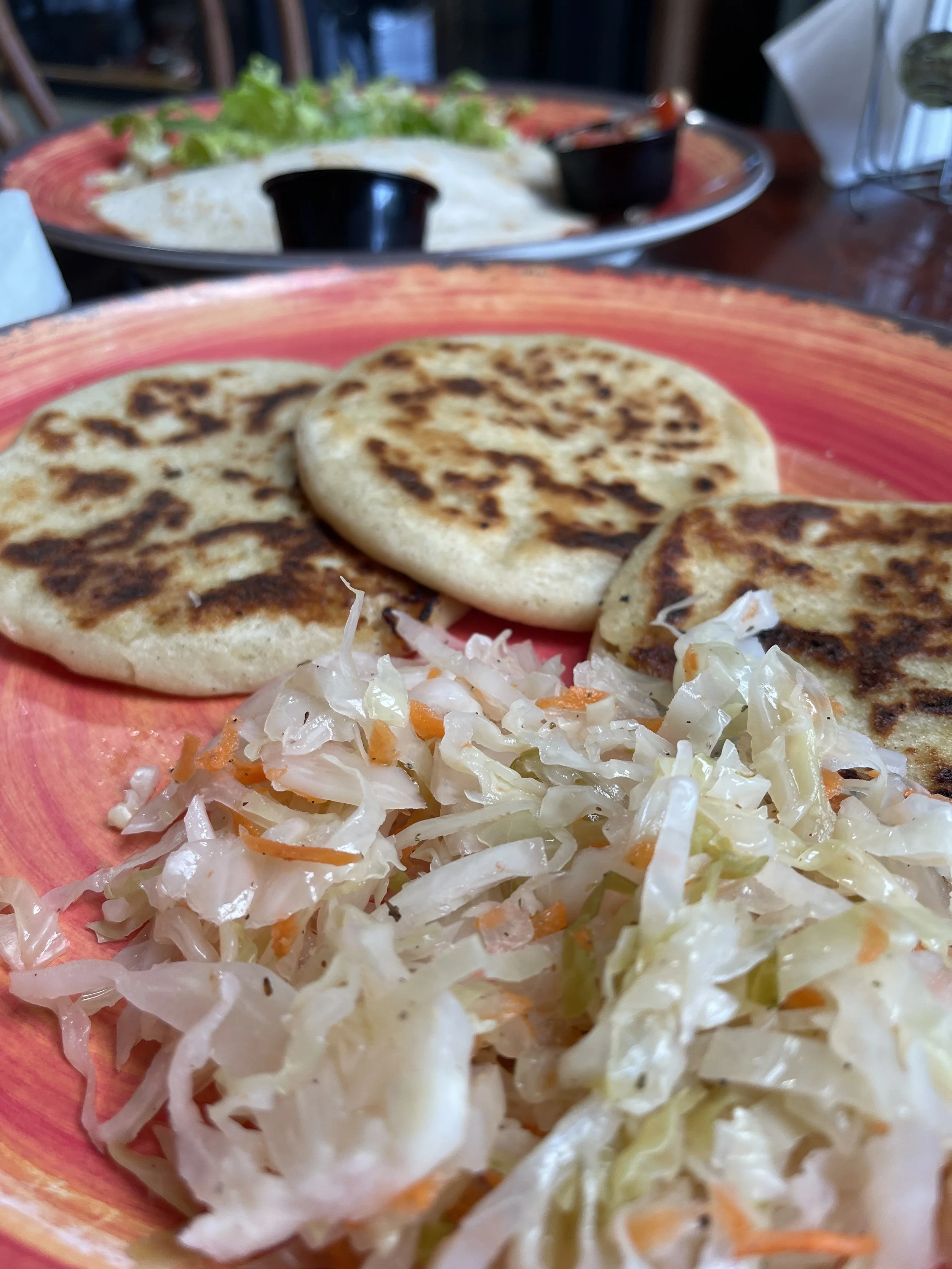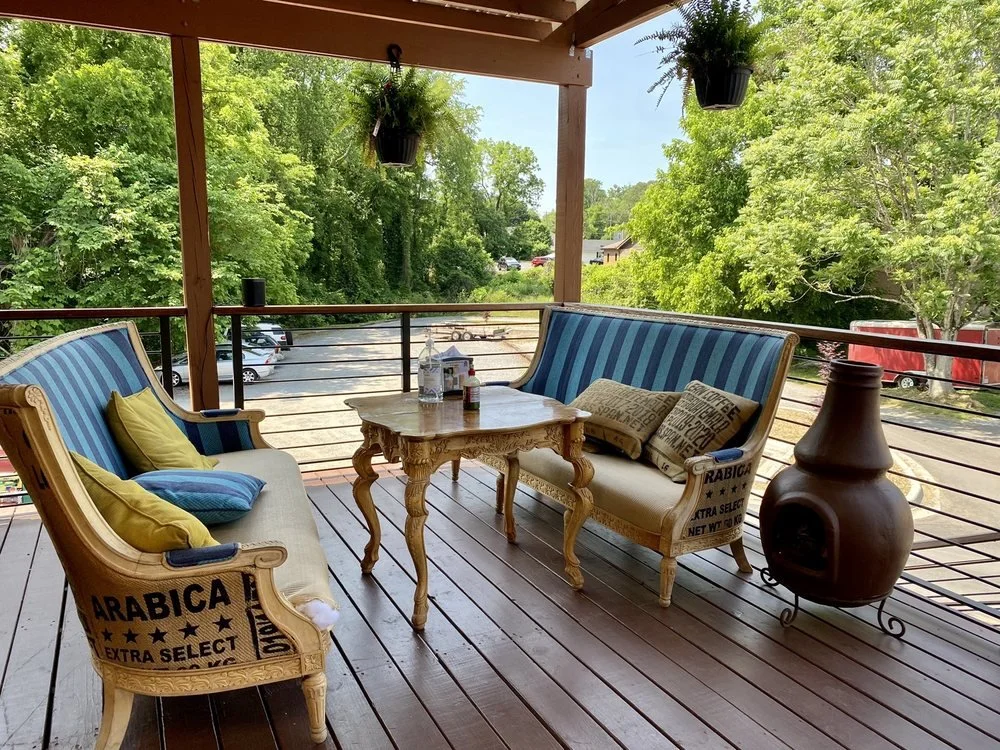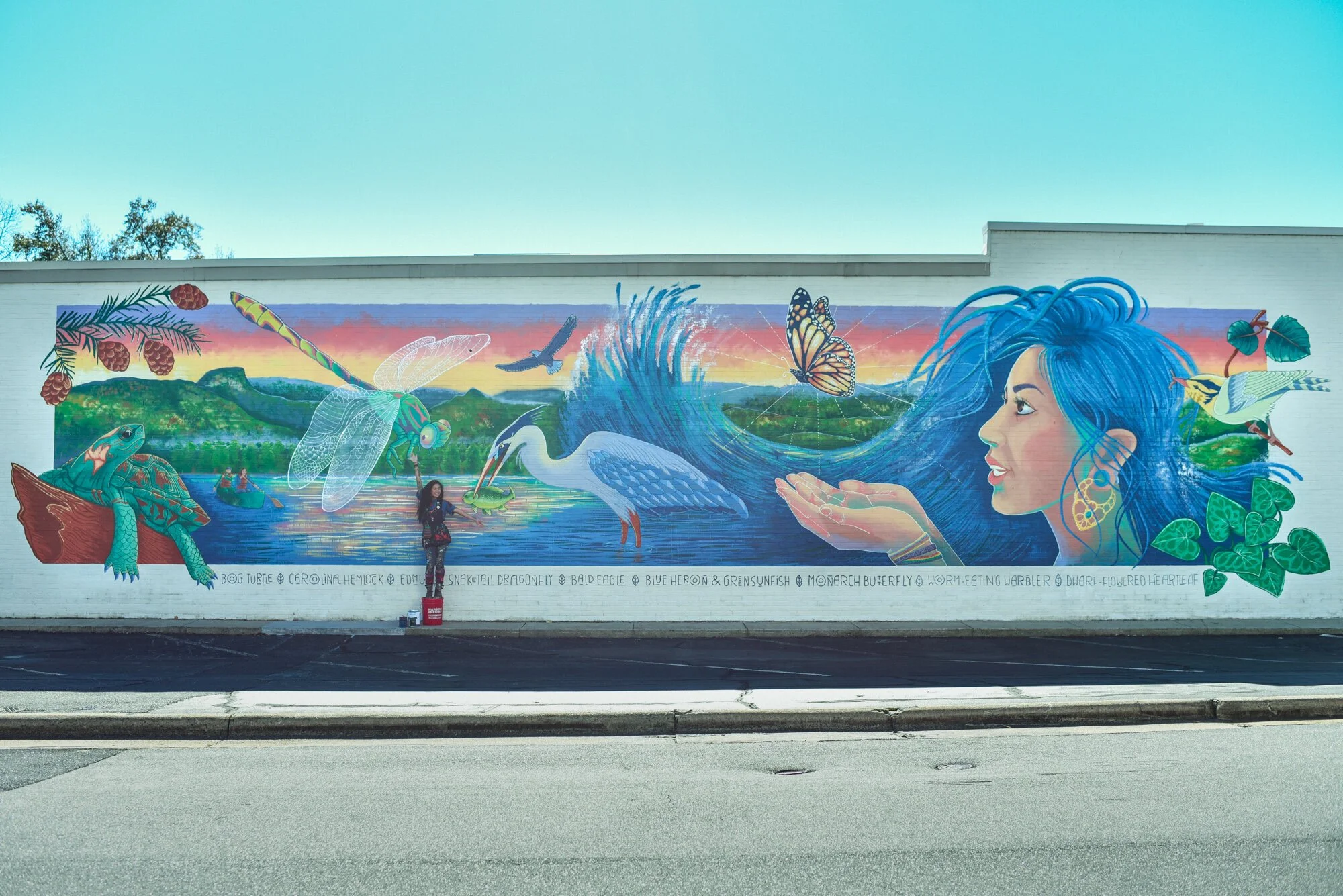Mayan Morganton
A bird’s eye view of Morganton, North Carolina (Photo via Morganton Main Street Office)
Morganton, a small town in North Carolina’s Catawba River Valley, was established in 1784 and named for Revolutionary War hero Brigadier General Daniel Morgan. It is a beautiful place from which the peaks of the Blue Ridge Mountains are visible. Pristine Lake James, spanning 6,500 acres at the base of those peaks, is a popular spot surrounded by ribbons of hiking trails. Morganton has a thriving arts scene, and the area has a bounty of breweries and bars.
The author making the most of Downtown Morganton’s bounty
A mix of artist and creative type spillover from pricey Asheville and families who have been around for generations, it’s a “pink” spot on this swing state’s political map – the controversial Confederate monument that dominates the grounds of the Burke County Courthouse a microcosm of a broader national conversation. According to 2023 census data, it is 64.9% white.
All to say, you might be surprised to hear the Q’an’Jobal Mayan dialect in a former feed and seed business on East Union Street.
Presentando: Little Guatemala
Little Guatemala (LG), a lovely restaurant and coffee shop I discovered a few years ago on my way to hike the nearby Fonta Flora Trail, began its life as a mobile coffee cart. Owners Christian and Erica Ramazinni opened their brick-and-mortar 8,000-square-foot property in 2021.
Photo via Little Guatemala on Facebook
LG makes the most of its location on the edge of Morganton’s downtown – a lovely back deck with Italianate loveseats and fluffy pillows overlooks a thicket of trees. The cuisine is all hearty and delicious Guatemalan fare – a couple of pupusas or chuchitos will fortify you for the day. But the star here is the coffee: Guatemalan coffee is ranked among the world’s best, and the owners source their beans from Antigua, Huehuetenango, and San Marcos – the country’s three growing regions. The facility also houses an indoor soccer field, home to youth programs and an adult league, and sells a variety of beautiful crafts.
The interior and back porch of Little Guatemala (Photos: Julie Strickland & Yelp)
Pero ¿por qué aquí? Why here?
War and industry
Two forces converged to foster the arrival of Morganton’s Guatemalan community, which as of 2023 numbered around 3,400 (20% of Morganton’s population): war at home and shifting industrial winds in North Carolina.
*Author’s note: There is a much deeper story that precedes those wars about the United States’ Cold War meddling in Central America. It is not the focus of this story, and yet it is definitely part of the story.
From the early 1980s, tens of thousands of Guatemalans fled their government’s campaign against Indigenous communities. They came first to Florida, harvesting fruits and vegetables.
Among them was a large Mayan population from the province of Huehuetenango, home to small towns and hamlets along the sides of the Cuchumatanes mountain range. Guatemala counts 21 distinct languages among its Indigenous peoples and there are six in Huehuetenango alone. The arrivals who would eventually make their way to Morganton were a smaller subset of this group – the first of which were Q’an’Jobal speakers. Few spoke Spanish, let alone English.



Huehuetenango, Guatemala (Photos by @photos_omar_argueta via Facebook)
Meanwhile, the industrial landscape was changing in North Carolina. A furniture production hub since Reconstruction, the industry’s competitiveness was key to its success. Wages for North Carolina furniture workers was easily half their New York counterparts in 1929, according to John Mullin’s 2020 article for the Federal Reserve Bank of Richmond. It was in the post-World War II years that the industry hit its high however, when per Mullin’s article “there was no significant offshore competition and plenty of demand.”
Everything changed in the early 90s as globalization, trade deficits, and (to a lesser extent) technological development ate into the trade. North Carolina lost about 400,000 jobs between 1993 and 2010, according to the NC Department of Commerce (NCDC).
As the furniture industry stumbled, meat processing expanded. North Carolina is now home to the second-largest animal processing and manufacturing cluster in the United States, per the NCDC. It relies on long hours and difficult labor, and so often also on immigrant and migrant laborers.
In the early 90s, poultry processing plant Case Farm enticed the Guatemalans now picking fruit in Florida with a promise of better pay, inside work, and mountain surroundings that resembled the Cuchumatanes back home. Many were bused directly from Florida to Burke County, and they would be followed by a second wave of newcomers after 1995, who traveled directly to Morganton at the recommendation of family and friends.
The community today
Little Guatemala grew out of co-owner Christian (who is from Guatemala) realizing that while Morganton is home to a sizable Guatemalan community, there had historically been few central gathering spaces. The business filled that void and is now a feature of Burke County’s Guatemalan community, a hub for those who have been here for decades, new arrivals and their families.
It has also been an entrepreneurial catalyst. Since LG opened, a number of Guatemalan-owned business have sprouted in the community.
Alongside the Guatemalan community’s economic engine, a thriving art scene is tapping into their experience. Project Realidades del Sur (Southern Realities), a collaboration between nonprofit arts advocacy studio TOSS and the North Carolina Museum of Art, is a mural project draping exterior walls in Burke County. The murals celebrate the diversity of the Catawba River Basin, featuring emerging Latinx artists from around the state and showcasing the region’s flora and fauna.
A Realidades del Sur mural (Photo via tosstudio.org)
And finally, the community’s cultural celebration has culminated in GuateFest, an event featuring dancers and musicians celebrating Guatemalan Independence Day alongside craft and food vendors from across North Carolina. The two-day celebration takes place in September.
To quote Burke County Tourism directly, it’s going to be fun y’all.
For a deeper dive into the story of Morganton’s Guatemalan community and its history of labor activism, I highly recommend the excellent “Maya of Morganton” by American labor scholar Leon Fink, PhD.
